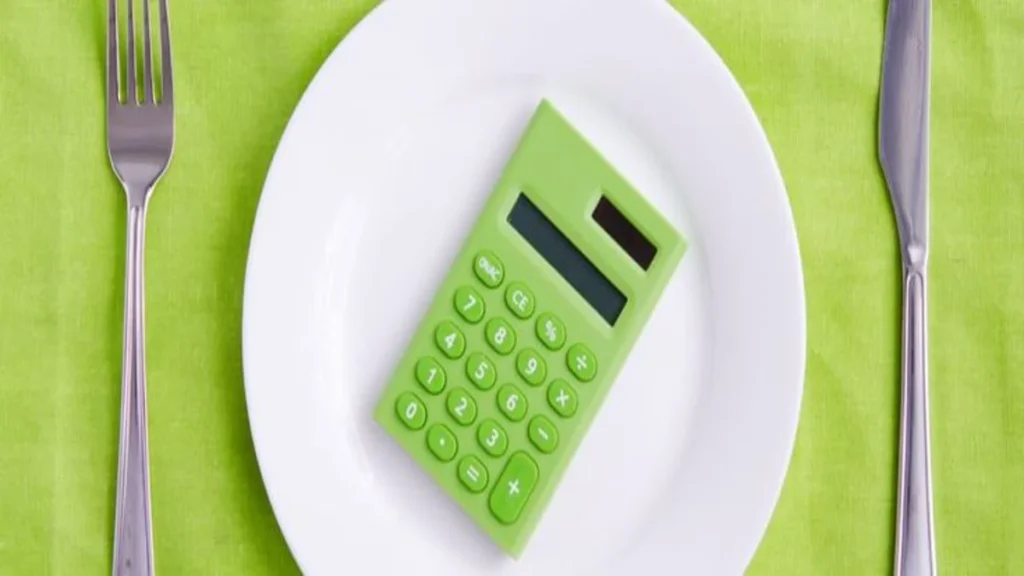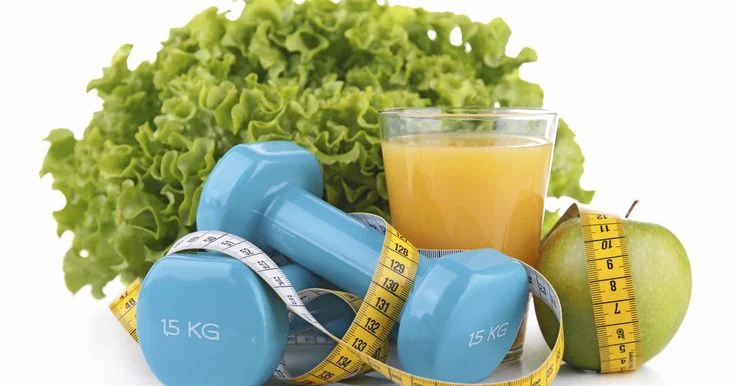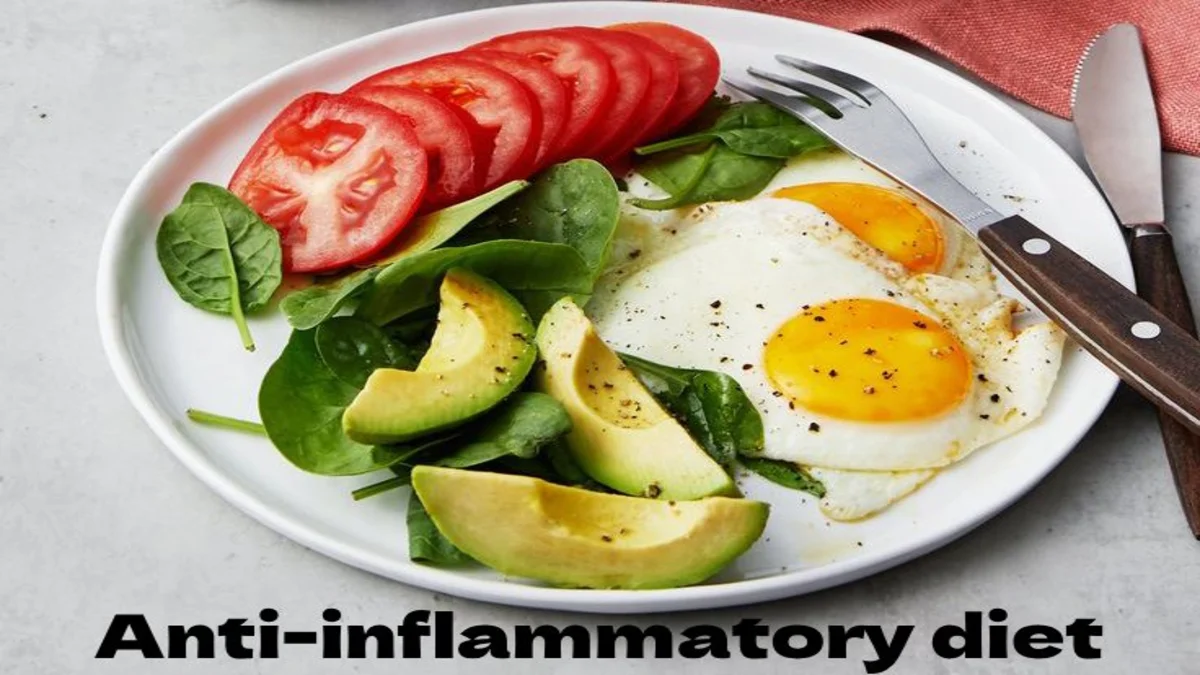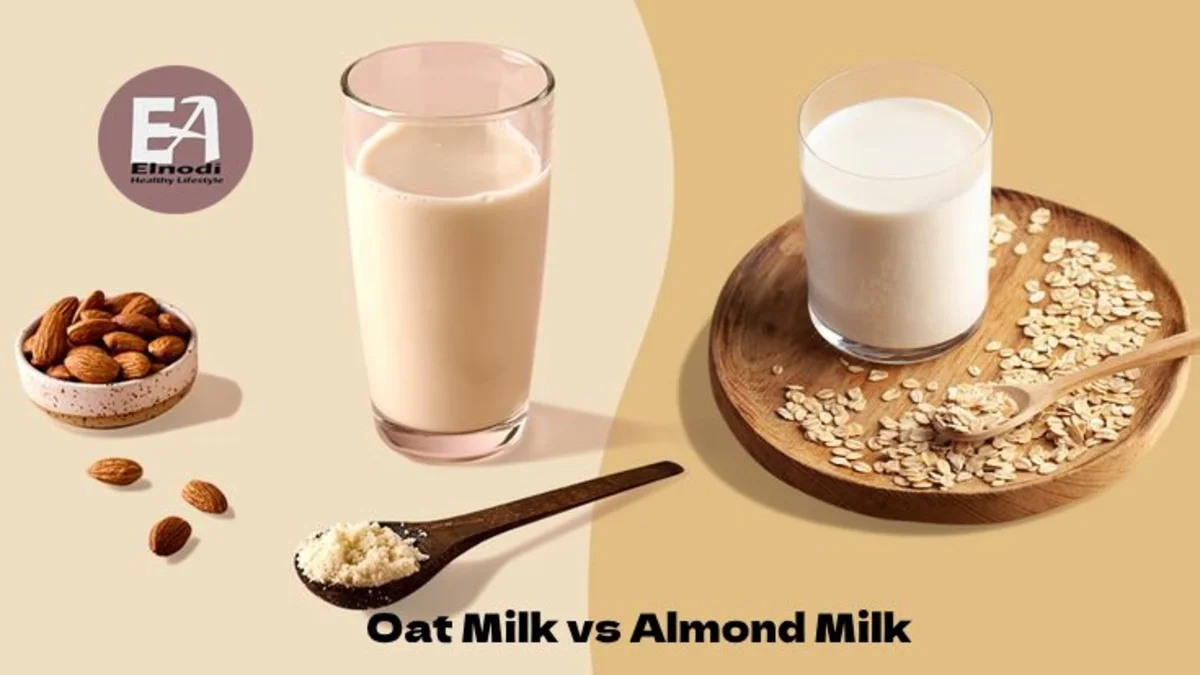Eating on a calorie-deficit diet is a tried-and-true way to get the job done, Nobody likes to diet but in the pursuit of losing a few pounds.
Calories are a measure of the amount of energy that humans obtain from food. A 500-calorie daily deficit should allow you to reduce weight without suffering significant exhaustion or hunger.
If you’ve ever attempted weight loss, you’ve probably heard that you need to be in a caloric deficit.
However, you might be wondering what it entails precisely or why it’s required for weight loss.
Everything you need to know about a calorie-deficit diet is covered in this article, including definitions, weight reduction implications, and sustainable, healthy methods of achieving it.
Table of Contents
what is a Calorie-Deficit Diet?
A calorie deficit diet is a nutritional approach in which an individual consumes fewer calories than their body expends, resulting in a negative energy balance.
This imbalance prompts the body to utilize stored fat for energy, leading to weight loss. To create a calorie deficit, one can reduce calorie intake through dietary changes and increase energy expenditure through physical activity.
This method is commonly employed for weight loss purposes and is based on the principle that to lose weight, the body must burn more calories than it takes in. Monitoring calorie intake and making informed food choices are key aspects of a calorie-deficit diet.
Is it possible to lose weight with a Calorie-Deficit Diet?

A calorie-deficit diet ought to aid in weight loss if you do the math correctly. According to Cording, “one of the main factors in weight gain or weight loss is calories.” “One can lose weight if their caloric intake is lower than their energy expenditure.”
Methods for computing caloric deficit
You must first ascertain how many calories you need each day. Czerwony suggests using the Mifflin-Saint Jeor calculation to figure out how many calories you require each day.
Although there are other resources, Czerwony points out that the Mifflin-Saint Jeor formula is less generic than other calorie calculators because it takes into account your height, weight, sex, age, and activity level.
After determining your daily energy needs, deduct your target calorie deficit from that figure. For instance, your new daily calorie target would be 1,300 calories (1,800 – 500 = 1,300) if your daily calorie requirement is 1,800 and you wish to achieve a 500-calorie deficit.
Alternatively, you can use an online calorie deficit calculator that combines the two of these methods.
In the pursuit of a healthier lifestyle, a calorie-deficit Diet emerges as a powerful tool, offering numerous benefits that extend beyond weight loss. This approach, rooted in science, focuses on consuming fewer calories than the body expends, resulting in a host of positive effects. Let’s explore the transformative benefits of embracing a calorie deficit diet.
How many Calorie-Deficit Diet a person needs each day
| Activity Level | Calorie Deficit for Weight Loss (per day) |
|---|---|
| Sedentary (little to no exercise) | 500 – 700 calories |
| Lightly active (light exercise/sports 1-3 days/week) | 700 – 900 calories |
| Moderately active (moderate exercise/sports 3-5 days/week) | 900 – 1,200 calories |
| Very active (hard exercise/sports 6-7 days a week) | 1,200 – 1,500 calories |
| Extremely active (very hard exercise/sports & physical job or 2x training) | 1,500+ calories |
Note: The calorie deficit values mentioned above are general estimates. Individual calorie needs may vary based on factors such as age, gender, metabolism, and overall health. It’s advisable to consult with a healthcare or nutrition professional to determine a personalized calorie deficit plan.
Benefits of Calorie-Deficit Diet
Efficient Weight Loss: Shedding excess pounds is the primary goal of a calorie-deficit diet. By creating a sustainable imbalance between calorie intake and expenditure, the body taps into stored fat reserves, leading to gradual and consistent weight loss.
Increased Energy Levels: Contrary to the misconception that reducing calories results in fatigue, a well-managed calorie-deficit diet can boost energy levels. As the body becomes more efficient in utilizing stored energy, individuals often experience increased vitality and alertness.
Improved Metabolic Health: Adopting a calorie-deficit diet has been linked to improved metabolic health. It can enhance insulin sensitivity, regulate blood sugar levels, and contribute to a reduced risk of metabolic disorders such as type 2 diabetes.
Enhanced Cognitive Function: Nutrient-dense foods play a crucial role in supporting cognitive function. A calorie-deficit diet encourages the consumption of whole, nutrient-rich foods, contributing to improved concentration, mental clarity, and overall brain health.
Cardiovascular Health Boost: Weight loss associated with a calorie-deficit diet is often accompanied by improvements in cardiovascular health. Reduced body weight, combined with a focus on heart-healthy foods, can lead to lower blood pressure and improved cholesterol levels.
Increased Longevity: Studies suggest that calorie restriction, a key component of a calorie-deficit diet, may promote longevity by influencing cellular processes related to aging. While the evidence is ongoing, the potential for a longer, healthier life is an exciting aspect of this dietary approach.
Flexible and Sustainable: One of the notable advantages of a calorie-deficit diet is its adaptability. It can be tailored to individual preferences and accommodates various dietary patterns, making it a sustainable choice for long-term health and wellness.
Positive Psychological Impact: Successfully navigating a calorie-deficit diet can have a positive impact on mental well-being. Achieving weight loss goals and witnessing physical improvements often contribute to increased self-esteem and a more positive body image.
side effects of Calorie-Deficit Diet
While a calorie-deficit diet can be an effective approach for weight loss and improving overall health, it’s important to implement it responsibly and be aware of potential dangers. Here are some risks associated with prolonged or extreme calorie deficit diets:
- Nutrient Deficiency: Severely restricting calorie intake may lead to insufficient consumption of essential nutrients such as vitamins and minerals. This can result in nutrient deficiencies, impacting various bodily functions and potentially leading to health problems.
- Muscle Loss: In an extreme calorie deficit, the body may break down muscle tissue for energy, leading to muscle loss. This can negatively affect metabolism and contribute to weakness, fatigue, and a less toned appearance.
- Slowed Metabolism: Prolonged calorie restriction can lead to a slowed metabolism as the body adjusts to lower energy intake. This adaptation can make it challenging to maintain weight loss in the long term.
- Hormonal Imbalances: Extreme calorie deficits can disrupt hormonal balance, affecting hormones such as cortisol, thyroid hormones, and reproductive hormones. This can lead to issues like irregular menstrual cycles in women and disruptions in other hormonal functions.
- Impaired Immune Function: Inadequate calorie intake may compromise the immune system, making the body more susceptible to infections and illnesses. Proper nutrition is crucial for supporting immune function.
- Mental Health Issues: Extreme calorie restriction can contribute to mood swings, irritability, anxiety, and depression. The psychological stress of constantly monitoring and restricting food intake can negatively impact mental well-being.
- Electrolyte Imbalance: In severe cases of calorie deficit, especially in conjunction with excessive exercise, there is a risk of electrolyte imbalance. This can lead to symptoms such as dizziness, and muscle cramps, and, in extreme cases, can pose a serious health threat.
- Increased Risk of Eating Disorders: A focus on strict calorie counting and restriction may contribute to unhealthy attitudes toward food and body image, potentially increasing the risk of developing eating disorders like anorexia or bulimia.
- Reduced Fertility: Extreme calorie deficits can disrupt reproductive hormones, leading to irregular menstrual cycles and, in some cases, infertility. This is particularly relevant for women.
- Gallstones: Rapid weight loss, often associated with severe calorie restriction, may increase the risk of developing gallstones. Gallstones can cause abdominal pain and other digestive issues.
It’s essential to approach calorie-deficit diets with caution and, if considering significant changes, consult with a healthcare professional or a registered dietitian. They can help create a balanced and sustainable plan tailored to individual health needs and goals, ensuring that the diet supports overall well-being without compromising essential nutrients or causing harm.
how do I calculate my calorie deficit?

Calculating your calorie deficit involves determining the number of calories you need to maintain your current weight (maintenance calories) and then creating a deficit by consuming fewer calories than that amount. Here’s a step-by-step guide:
- Calculate Basal Metabolic Rate (BMR): Your BMR represents the number of calories your body needs at rest to maintain basic physiological functions. Use an online BMR calculator or the Harris-Benedict equation to estimate your BMR based on factors like age, gender, weight, and height.
- Factor in Physical Activity: Determine your Total Daily Energy Expenditure (TDEE) by multiplying your BMR by an activity factor that reflects your level of physical activity:
- Sedentary (little or no exercise): BMR x 1.2
- Lightly active (light exercise/sports 1-3 days/week): BMR x 1.375
- Moderately active (moderate exercise/sports 3-5 days/week): BMR x 1.55
- Very active (hard exercise/sports 6-7 days a week): BMR x 1.725
- Extremely active (very hard exercise/sports & physical job or 2x training): BMR x 1.9
- Set a Caloric Deficit: Determine the deficit you want to create. A common recommendation is to aim for a deficit of 500 to 1,000 calories per day, which can lead to a weight loss of approximately 1-2 pounds per week. Be cautious not to create an excessively large deficit, as this can have negative effects on your health. Example: If your TDEE is 2,000 calories, a 500-calorie deficit would mean aiming for a daily intake of 1,500 calories.
- Monitor and Adjust: Track your calorie intake using a food diary or mobile app. Monitor your weight and adjust your calorie intake as needed. If you’re losing weight too quickly, consider increasing your calorie intake slightly. If weight loss is too slow, you might need to further reduce your calorie intake or increase physical activity.
- Consider Professional Guidance: If you have specific health concerns, dietary restrictions, or unique circumstances, it’s advisable to consult with a registered dietitian or healthcare professional. They can provide personalized advice based on your individual needs.
Remember that weight loss is a gradual process, and crash diets or overly restrictive approaches can be counterproductive and potentially harmful. Focus on creating a sustainable calorie deficit that supports your overall health and well-being.
Tips for eating fewer calories
Eating fewer calories can be a key component of weight management and achieving a calorie deficit for weight loss. Here are some practical tips to help you reduce calorie intake:
- Portion Control: Be mindful of portion sizes. Use smaller plates, bowls, and utensils to help control portions and avoid overeating.
- Eat Mindfully: Pay attention to what you’re eating. Avoid distractions like TV or phones during meals, and savor each bite. Eating slowly can help you recognize when you’re satisfied, preventing overeating.
- Stay Hydrated: Drink water throughout the day. Sometimes, our bodies can mistake thirst for hunger. Staying hydrated can also help you feel fuller and reduce the likelihood of overeating.
- Choose Nutrient-Dense Foods: Opt for foods that are rich in nutrients but lower in calories. Vegetables, fruits, lean proteins, and whole grains are excellent choices for a nutrient-dense diet.
- Limit Processed Foods: Processed foods often contain hidden calories from added sugars, fats, and other additives. Choose whole, unprocessed foods whenever possible.
- Be Aware of Liquid Calories: Sugary drinks, alcohol, and even some seemingly healthy beverages can contribute a significant number of calories. Choose water, herbal tea, or other low-calorie options.
- Cook at Home: Cooking your meals allows you to control ingredients and portions. It also allows you to experiment with healthier cooking methods.
- Include Protein in Meals: Protein-rich foods help you feel full and satisfied, reducing the likelihood of snacking on high-calorie snacks between meals.
- Plan Meals and Snacks: Plan your meals and snacks to avoid impulsive, high-calorie food choices. Having healthy options readily available can prevent reaching for less nutritious alternatives.
- Use Smaller Plates: Using smaller plates can create the illusion of a larger portion, helping to satisfy your visual perception while consuming fewer calories.
- Fiber-Rich Foods: Foods high in fiber, such as fruits, vegetables, and whole grains, can help you feel full for longer periods, reducing overall calorie intake.
- Limit Added Sugars: Minimize your intake of foods and beverages with added sugars, as these can contribute to excess calories without providing significant nutritional value.
- Read Labels: Pay attention to nutrition labels to understand the calorie content and nutrient composition of packaged foods. This can help you make informed choices.
- Plan Healthy Snacks: Have nutritious snacks available to prevent reaching for high-calorie, processed snacks when hunger strikes between meals.
- Practice Moderation: Allow yourself occasional treats, but practice moderation. Enjoying small portions of your favorite foods can help you stay on track without feeling deprived.
Remember that individual calorie needs vary, and it’s essential to find an approach that suits your lifestyle and health goals. If you have specific dietary concerns or health conditions, consider consulting with a registered dietitian or healthcare professional for personalized advice.
what foods to eat on a Calorie-Deficit Diet

| Food Category | Food Options | Serving Size | Calories | Notes |
|---|---|---|---|---|
| Proteins | Grilled chicken breast | 3 oz | 165 | Lean source of protein. |
| Salmon | 3 oz | 177 | Rich in omega-3 fatty acids. | |
| Greek yogurt (plain, non-fat) | 1 cup | 100 | High in fiber, and low in calories. | |
| Tofu | 1/2 cup | 94 | Suitable for vegetarians. | |
| Vegetables | Broccoli | 1 cup (cooked) | 55 | Low in calories, and high in antioxidants. |
| Spinach | 1 cup (raw) | 7 | Nutrient-dense and low-calorie. | |
| Bell peppers | 1 medium | 25 | Rich in vitamins and antioxidants. | |
| Fruits | Berries (strawberries, blueberries) | 1 cup | 50-80 | Rich in protein, and low in calories. |
| Apple | 1 medium | 95 | Provides natural sweetness and fiber. | |
| Grapefruit | 1 medium | 52 | May aid in weight loss. | |
| Whole Grains | Quinoa | 1/2 cup (cooked) | 111 | High in protein and fiber. |
| Brown rice | 1/2 cup (cooked) | 108 | A good source of complex carbohydrates. | |
| Oats | 1/2 cup (cooked) | 150 | Provides sustained energy. | |
| Legumes | Lentils | 1/2 cup (cooked) | 115 | High in protein and fiber. |
| Chickpeas | 1/2 cup (cooked) | 134 | Versatile and nutritious. | |
| Healthy Fats | Avocado | 1/4 avocado | 80 | Contains heart-healthy monounsaturated fats. |
| Nuts (almonds, walnuts) | 1 oz | 160-200 | High in healthy fats and protein. | |
| Dairy or Alternatives | Cottage cheese (low-fat) | 1/2 cup | 110 | Rich in protein, low in calories. |
| Almond milk (unsweetened) | 1 cup | 30 | Low-calorie dairy alternative. | |
| Beverages | Water | 8 oz | 0 | Stay hydrated for overall health. |
| Green tea | 1 cup | 0 | May boost metabolism. |
Summary
When you eat fewer calories than your body uses, you are in a calorie deficit.
A 500-calorie daily calorie deficit is useful for long-term, healthy weight loss.
You can achieve a calorie deficit without calorie tracking by cutting out sugary drinks, eating primarily less processed foods like fruits and vegetables, and preparing your meals at home.
FAQs
how do I start a calorie-deficit diet?
You can either increase your calorie production through physical activity or decrease your calorie intake to achieve a calorie deficit. You can also combine the two. 3. For instance, by removing 250 calories from your diet each day and burning an extra 250 calories via exercise, you can achieve a 500-calorie deficit.
how many calories should I be eating to be in a deficit?
What Kind of Calorie Shortage Do You Need? A calorie deficit of roughly 500 per day is a decent starting point for healthy weight reduction. That ought to set you up for a weekly weight loss of roughly one pound. For women, this is based on a starting point of 1,200–1,500 calories per day, and for men, it is 1,500–1,800 calories per day.





